- Home
- M G Vassanji
And Home Was Kariakoo Page 12
And Home Was Kariakoo Read online
Page 12
He was of course a racist of his time, and apparently more so with respect to Africans. (But we should not forget that the Africans and Indians had their own disparaging observations of the white man among them. As Burton and Speke arrived in one village, the women gathered to laugh at their looks; at another place a rumour had spread that they were cannibals.) He makes vast and quick generalizations—a tendency in travel writing that’s surely still not gone away. Of the people of the mrima (the coastal territory between Mombasa and Kilwa), who were a mixture of African and Arab descent, he says, “The Wamrima are an ill-conditioned race; they spend life in eating, drinking and smoking, drinking and dancing, visits, intrigue, and low debauchery. They might grow cotton and coffee … but whilst a pound of grain remains in bin, no man will handle a hoe.” And of the Baluchi soldiers who accompanied him, and whom he finds gallant elsewhere, he says also: “Abject slaves to the Great Gaster, they collect in swarms round a slaughtered goat, and they will feast their eyes for hours on the sight of a rice-bag.” He has intense dislike of “half-castes”—as did other Europeans, perhaps because they seemed not to know their place—but approves of the Nyamwezi porters. He is not consistent, and it appears that he displays in his observations the frustrations of a traveller, especially a westerner, being openly ripped off, and one imagines the locals chuckling away at their small triumphs over the strange white men—who wrote in their books, worked with strange instruments, were influential in Zanzibar, and dangerous with their weapons, but who could also be easily duped and evidently afford to be robbed. But Burton is never aloof or patronizing; he learns and speaks the people’s lingo, bargains and argues with them, moves amongst them, and in his pages he recreates them vividly as characters. Before his departure he goes around listening to bazaar “gup”—using an Indian colloquial term for gossip; he visits a coastal medicine man to ensure good luck for the expedition; he listens in as two Bhatias discuss in Kutchi the improbability of the white man’s impending journey’s success, later telling one of them that he had understood him. His prose makes use of Swahili words with ease, and in one footnote he gives a quick primer on Swahili word-formation. He quotes in Arabic, Greek, Latin, French, Kutchi, Hindustani.
Who but Burton among the explorers, or any of his compatriots, would relate a pudding at an Arab house to the Indian firnee (khir); or slyly hint that the name of the coastal town Mbwamaji puns with a Swahili slang for penis; or discuss forms of pilau; or scold his compatriots for not learning how to cook rice properly?
Burton’s companion John Speke, tall, slim and blond, with what one modern admirer calls a willowy figure, could not have been more different. His writing style is sober, efficient, and formal, and he appears to be a good organizer. Rarely does he show emotion or frustration, evoke a person or a place beyond naming them or their function. But he is not beyond racist generalizations. The African is the “curly-headed, flab-nosed, pouch-mouthed negro,” the unfortunate, the cursed progeny of Ham, therefore a “strikingly existing proof of the Holy Scriptures,” and he is by nature devious and lazy. And though Speke admits once that the African can be taught and is a good learner, at other places he presents him as incorrigible. “Laziness is inherent in these men.” The African “works his wife, sells his children, enslaves all he can lay his hands upon, and, unless when fighting for the property of others, contents himself with drinking, singing, and dancing like a baboon, to drive dull care away.” Having lived in India, he apparently uses Hindustani to communicate with some of the men, but Speke is not a linguist, nor a show-off, and unlike Burton does not quote in any other language. The narrative is almost entirely in English. The speech he quotes is stilted and sounds artificial. Many observations are provided about “African” ways, but we wonder how precise they are. When he describes a child sacrifice, for example—before telling us that such events are rare—we wonder if he actually witnessed such an event. According to him the African lives only on instinct, he does not possess thought or culture. It appears that Speke, prone to being a victim of cheating, mischief, and misunderstanding as a foreign traveller, uses these instances in his portraits of the “African” character. He quotes a bizarre theory that the ancient Indians knew the source of the Nile, and equally bizarre etymologies for some place names: Uzaramo (the country of the Wazaramo people), according to Speke, is the land of “Ramo,” whoever he is.
Those Unknown Others
The story of that expedition, as the background to a tragic relationship between two extraordinary English explorers, polar opposites of each other in their personalities, has been retold many times and from various perspectives. Their public argument, which ended in Speke’s death by gunshot wound just prior to his scheduled debate with Burton in the city of Bath, belongs to the lore of nineteenth-century European explorations of Africa. It is a colourful narrative linked to the mystery of the Nile source and has benefitted much from the rich publishing culture of Great Britain. Having paid that due, one cannot help but wonder today, long after the end of the colonialism that began in the wake of those explorations, about all those other characters, the Africans, and Indians, and Arabs, who were also part of the adventure. Who were they, and what went on in their lives? How did they perceive the goals and the day-to-day events of the long journey? We might have heard from them different romances, tragedies, or travails. The maligned Baluchis and the even more despised Goans might have given us their own observations of the two wazungus, or goras (white men). But what we know about the rest of the caravan is almost entirely from the writings of the two Englishmen. There is enough for us just to wonder, and to regret that there is not more.
A mischievous, enigmatic character like a self-effacing jinn slips in and out of the nineteenth-century explorers’ accounts: it is that of the Zanzibar-based Indian trader who facilitated the journeys. Ladha Damji was an Indian from the Bhatia caste of Kutch—in present-day Gujarat—and therefore a speaker of Kutchi, as are many Tanzanian Asians to this day. He was a vania, the quintessential Indian trader. We may well question how successful the Burton–Speke expedition would have been without his assistance: his firm offered a vast quantity of supplies, ranging from sewing needles to camp chairs, tea to gunpowder, everything two Englishmen might need to survive in the jungle for two years, plus the porters and asses to carry them.
Imagine: Burton arrives at the mainland port of Kaole on the Artemise and finds that most of the porters he had arranged to have hired for him—having been informed of the arduous journey that awaited them with the white men—have absconded with their advance pay. How will he find more porters, what can he afford to take with him under the circumstances, what to leave behind? Arrives this Indian wearing his national dhoti and red conical fool’s cap, on a “native vessel,” and says, Not to worry, and reorganizes the journey, substituting donkeys for lost men, giving comfort and assurance, negotiating and cajoling all around, promising to send remaining supplies to follow. Nothing looks impossible—or so it is made to seem, such is the nature of the pliable vania (who of course takes his cut), and the journey can proceed.
Waiting in Kaole as the details of the journey are being worked out, Burton builds up a relationship with his facilitator Ladha. Before the expedition departs, he happens to overhear a conversation in Kutchi between Ladha and a relation, Ramji, questioning the wisdom of his impending journey. The two men give him reasonable chances to reach Ugogo in the centre of the country, but no farther. Burton later tells the man, to his embarrassment, that he understood the conversation all along. And when Ladha objects to the shooting of a wild hippo, which has just caused the deaths of three men, Burton asks him, why should he, who bought tusks and therefore “encouraged the destruction of herds of elephants” and had no compunction about destroying a rival in business, “object to the death of a ‘creek bull’?” Says Burton, “Ladha received these futile objections contemptuously.…” But “When Ladha left,” he confesses, “my spirits went with him.”
According to H.M.
Stanley, arriving much later in Zanzibar in 1870 to begin his search for Livingstone, who had not been heard of for months, Ladha was still around, “a venerable-looking old man, with a shrewd intelligent face …” and he calls him “the great Ludha Damji.”
But who was Ladha really? Was he tall or short, thin or fat? Did he have a family? We don’t know. He died in 1871.
The Bhatias originate in Sindh and Rajasthan. Muhammad Ali Jinnah, the founder of Pakistan, was from this caste, though a Khoja. (The difference was the practice of faith.) The Khojas and the Hindu Bhatias were the two largest groups of Asians on the East African coast. Tharia Topan, another great Zanzibari trader, who interacted with Stanley but had not yet reached his eminence in Burton’s time, was from the same caste and a Khoja as well.
Says Stanley, “[The Indians] can produce scores of unconscionable rascals where they can show but one honest merchant. One of the honestest among men, white or black, red or yellow, is a Mohammedan Hindi called Tarya Topan … a proverb for honesty, and strict business integrity. He is enormously wealthy, owns several ships and dhows and is a prominent man in the councils of [Sultan] Barghash. Tarya has many children.…”
Legend has it that Tharia came as a twelve-year-old runaway on a dhow from Kutch to Zanzibar and worked his way up. He always maintained good relations with the British consul. After Barghash’s unsuccessful attempt to snatch the throne away from his brother Majid following their father Seyyid Said’s death, he was advised by the British consul to leave the island. He went to Bombay accompanied by Tharia, who also later accompanied him to London, where he was described as a stout, fair-skinned man with a red-dyed beard, wearing a blue, embroidered robe. He was a philanthropist and Khoja mukhi (headman) for a while, and definitely more flamboyant and travelled than Ladha Damji, who had employed him as a young man. He was knighted by Queen Victoria in 1875 in London, apparently for helping the British government’s efforts to end the slave trade; his business dealings with the slave and ivory trader Tippu Tip, however, raise a question.
Perhaps the most remarkable man associated with the European expeditions was Sidi Mubarak Bombay, the so-called African factotum, a former slave who was hired as a gun-bearer but became an indispensable man for all purposes, a guide, a translator and interpreter, a negotiator. Burton describes him thus:
The gem of the party, however, is one Sidi Mubarak, who has taken to himself the agnomen “Bombay.” His sooty skin, and teeth sharp-pointed like those of the reptilia, denote his origin from the Ohiao [Uyao] … Bombay, sold at Kilwa in early youth, a process of which he talks with many broad grins, was carried to Cutch [Kutch] by some Banyan, and there became a libertinus: he looks fondly back upon the hour of his adoption, and he sighs for the day when a few dollars will enable him to return. His head is a triumph to phrenology; a high narrow cranium, denoting by arched and narrow crown, fuyant brow and broad base with full development of the moral region, deficiency of the reflectives, fine perceptives, and abundant animality. His hair is of the woolliest: his twinkling little eyes are set close together.… He attends us everywhere, manages all our purchases, carries all our messages, and when not employed by us, he is at everyman’s beck and call.
Thirteen years after the Burton–Speke expedition set off, H.M. Stanley arrived in Zanzibar. Stanley was an American journalist; the United States had only recently emerged from the civil war and seen the emancipation of its slaves. His attitude to Africans was different—he says. Walking around Zanzibar gave him a certain realization about the African: “From here he [the white visitor] begins to learn that negroes are men, like himself, though of a different colour …”
To begin his voyage, in Zanzibar he had gathered Speke’s “Faithfuls,” those who had travelled with Speke and Grant before, and some with the earlier expedition under Burton. One of them was Sidi Mubarak, who was called back from the isle of Pemba, where he had retired. Of Mubarak, Stanley says he was
… a slender short man of fifty or thereabouts, with a grizzled head, an uncommonly high, narrow forehead, with a very large mouth, showing teeth very irregular and wide apart … [his] face was rugged, his mouth large, his eyes small, and his nose flat.
Sidi Mubarak accompanied four expeditions: the one with Burton on a tour of the coast in 1857 when he was hired as a gun carrier; the Burton–Speke Expedition (1857–59), when he was Speke’s personal servant and interpreter; the Speke–Grant Expedition (1860) all the way to Uganda and the source of the Nile, when he was a captain; and finally the one under Stanley (1871), when Livingstone was discovered in Ujiji. He was an indispensable man, yet one whose relations with Stanley and Speke, at least, were fraught. Reading Stanley about him one is aware of an independent-minded, opinionated, and passionate man. Stanley didn’t like Mubarak, despite his first impression upon seeing him. There were confrontations between the two, but of course the white man held the power, including that to punish and humiliate. “Bombay gets a thrashing,” is one subheading of Stanley’s account, How I Found Livingstone. Sidi Mubarak Bombay stands as an example of the contradictions in the wild and racist generalizations made by these explorers about the Africans.
When Burton and Speke reached Kazeh, they were welcomed by the trader Musa Mzuri. Burton calls him “the Indian doyen of the merchants settled at Unyamwezi …,” translating his name as “Handsome Moses,” though “Good Moses” is perhaps more accurate. Musa, says Burton, was one of those people who developed Kazeh into the eminent market it now had become. So well respected was Musa that Burton devotes a good few pages to him:
Musa Mzuri is now a man of the uncertain “certain age” of between forty-five and fifty, thin-bearded, tall, gaunt, with delicate extremeties, and with the regular and handsome features of a high-caste Indian Moslem. Like most of his compatriots he is a man of sad and staid demeanour, and he is apparently faded by opium, which so tyrannizes over him that he carries pills in every pocket, and stores them, lest the hoard should run short, in each corner and cranny of his house.
He had come to Kazeh with his brother Sayyan from Surat, India, and had made his wealth starting from twenty loads of cloth and beads. Sayyan had since died. Musa dressed smartly, wearing a “snowy skull-cap,” and perfumed himself with jasmine and sandalwood. His abode was almost a village, with lofty gates, crowded with buyers and sellers.
James Grant, who accompanied Speke in 1860, was also impressed by Musa, who along with others came out a mile to welcome the party. “Guns were fired, jambos and salaams with shaking of hands followed, and we were lodged once more under a hospitable roof.”
Moossah [Musa], an Indian in whose house we resided, was a fine benevolent old man, with an establishment of 300 native men and women round him. His abode had, three years ago, taken two months to build, and it was surrounded by a circular wall which enclosed his houses, fruit and vegetable trees, and a stock of cattle. The lady who presided over the whole was of most portly dimensions, and her word was law.
He also never missed his opium pill in the afternoon, had several wives, and chatted all the while the Quran was being recited to him by a sheikh from Madagascar. He had slaves, like all men of any wealth, and, what is truly remarkable, he told Grant that “The Egyptian river flowed from the Lake Nyanza [Victoria].” So much for the Nile controversy.
Grant and Speke stayed with Musa for fifty-one days, at the end of which Speke presented the Indian with five hundred dollars and a gold watch.
I’ve learned much about Speke and Burton, and about Livingstone and Stanley, since elementary school, when the “I Presume” moment was firmly etched in my mind. Perhaps the first place I went to see, as a wide-eyed colonial abroad, of London’s many historic sites, was Westminster Abbey and specifically the exact place where Livingstone lies buried. It was a moving moment for a variety of reasons. And then the question persisted, Where was I in all this history?
We can hardly blame the others for celebrating their own heroes, writing their own stories; the question is, why did “we�
� not produce our own stories? (If I may be forgiven the temporary distinction between “them” and “us” to make my point.) I was brought up with only the vaguest sense of my own history as an Asian African, much of it mythological or even recently concocted. As Asians growing up in East Africa we didn’t know how our forefathers had arrived, how they lived, or even what they looked like. It was later, while living abroad, that this information seemed vital for my sense of who I was. The stories of Ladha Damji and Musa Mzuri and Sidi Mubarak and Tharia Topan, the descriptions by James Elton of the Bhatias and the Khojas, lonely in their shops in the coastal towns of Tanzania—bare glimpses of these men (no women or children were mentioned)—were my stories; they were part of my projected completion as a person. To find them in the pages of the explorers’ accounts, therefore, regardless of ignorance and jaundiced perceptions, was a thrilling experience, and I was thankful to these men who wrote.
Who were these men as people? As fathers, husbands, community men? To some commentators, Musa was a drug addict and a greedy businessman. An easy enough caricature. I see him as an Indian who arrived penniless and went native in East Africa way back in the mid-1800s, whose mixed children spoke no Indian language, who welcomed the white strangers to his home, and who knew quite casually that the Nile began at Lake Victoria. And then he disappears from our view. Did he write home? What were his relations to India? There is even scanter information about Ladha Damji; I imagine him in his shop worrying about his mother as Indian men are wont to do. Tharia Topan’s descendants are known. Once I had tea with a grandson in London, and he had some stories about the old man. A descendant was superintendent of a hostel in Mombasa.

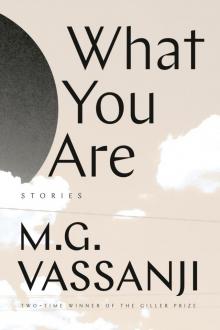 What You Are
What You Are A Delhi Obsession
A Delhi Obsession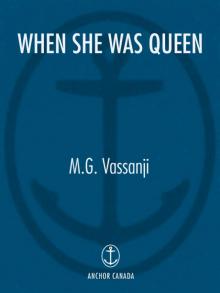 When She Was Queen
When She Was Queen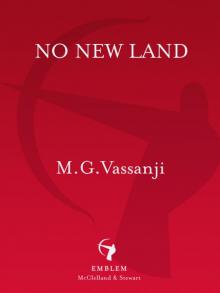 No New Land
No New Land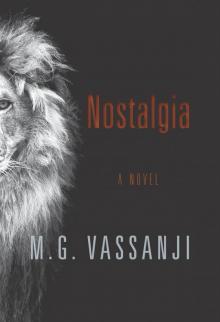 Nostalgia
Nostalgia Mordecai Richler
Mordecai Richler The Book of Secrets
The Book of Secrets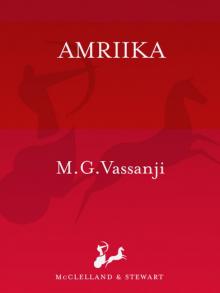 Amriika
Amriika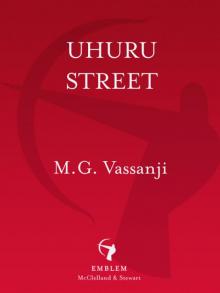 Uhuru Street
Uhuru Street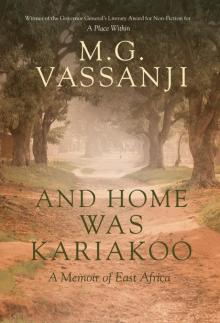 And Home Was Kariakoo
And Home Was Kariakoo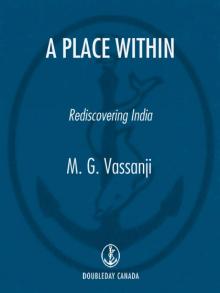 A Place Within
A Place Within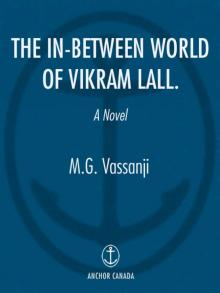 The In-Between World of Vikram Lall
The In-Between World of Vikram Lall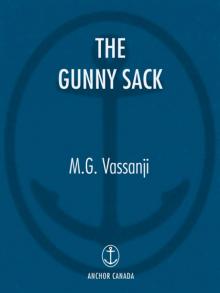 The Gunny Sack
The Gunny Sack